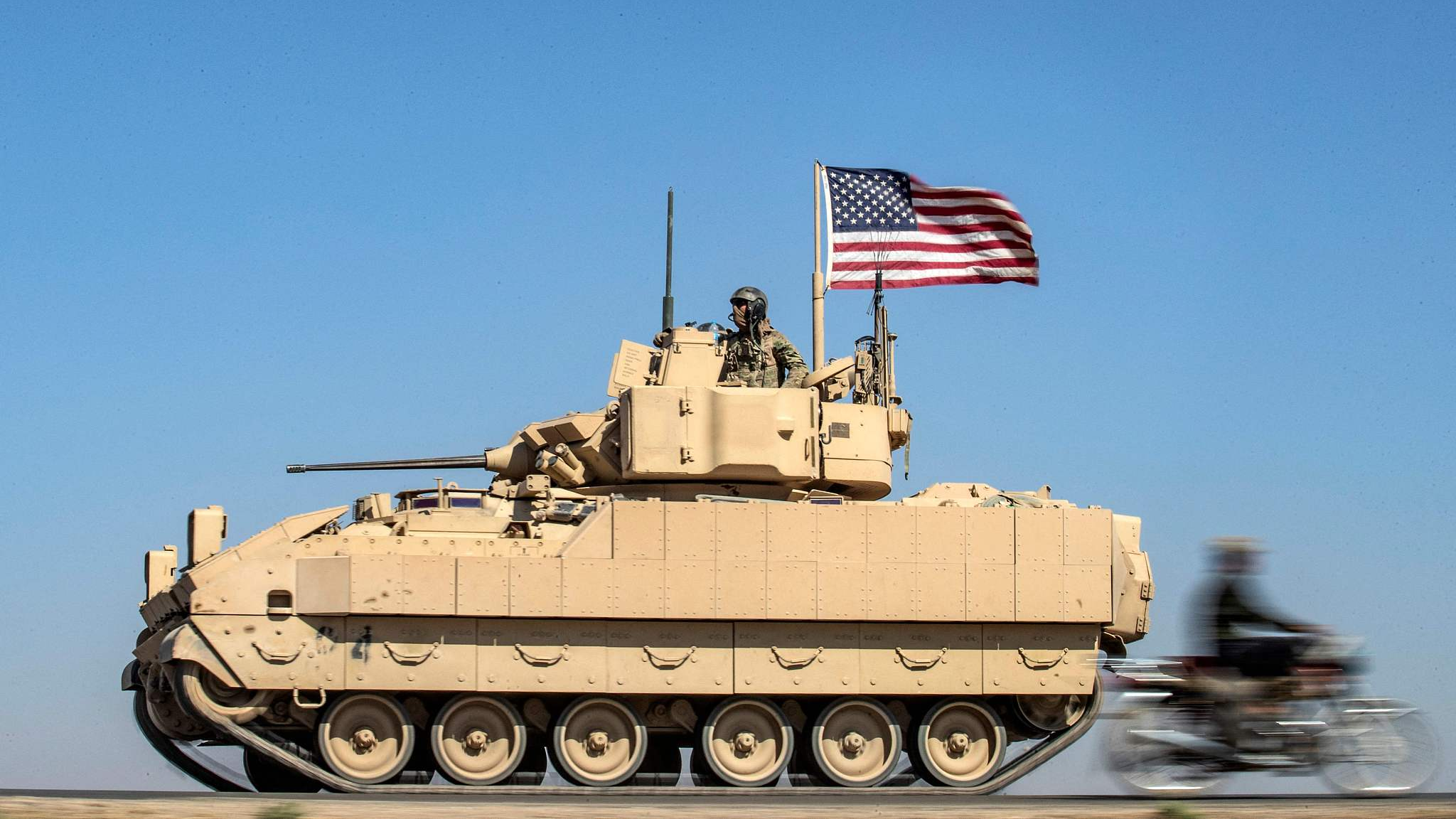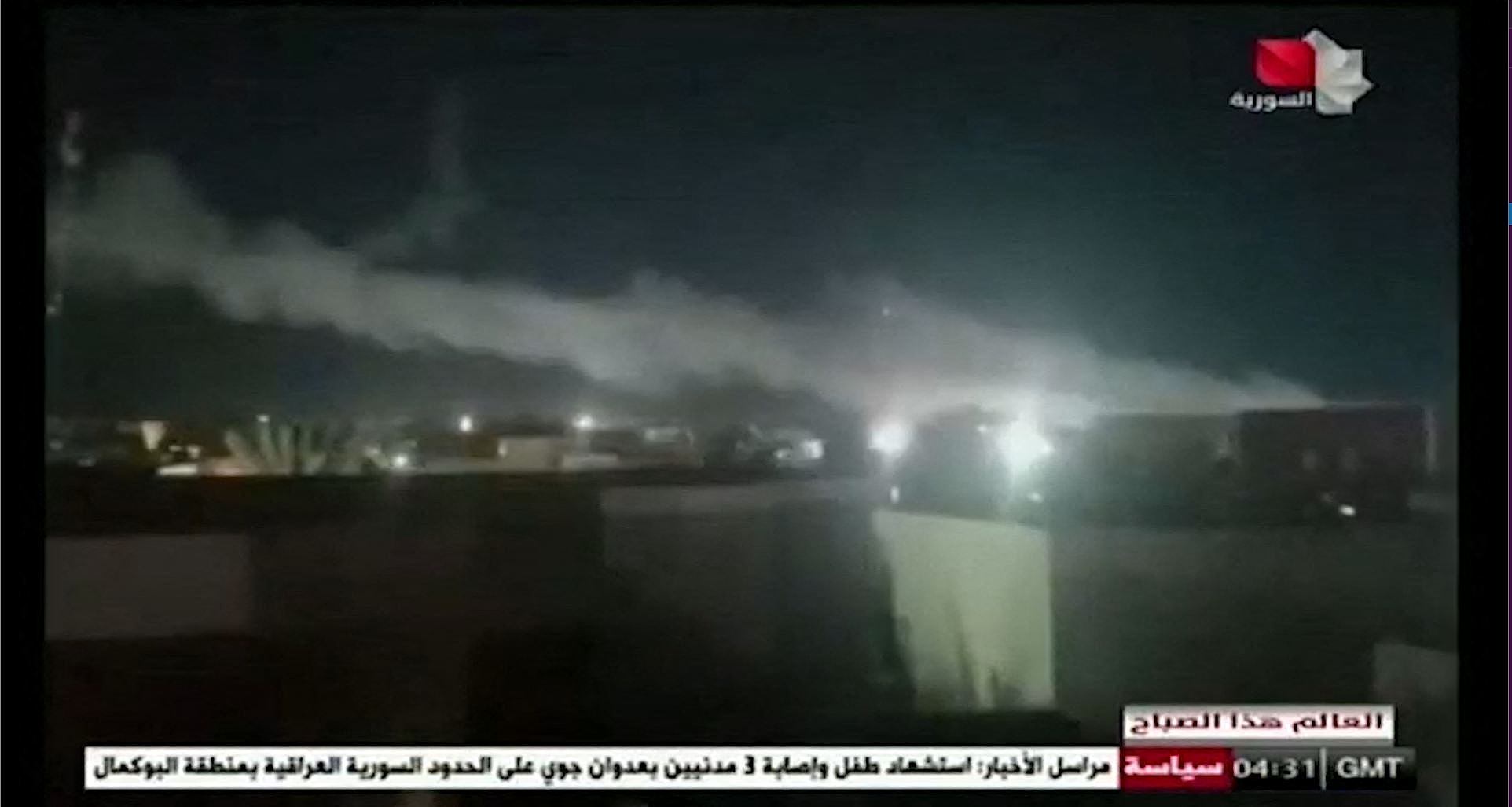
A motorcycle rides past a U.S. Bradley Fighting Vehicle (BFV) on patrol near the Rumaylan (Rmeilan) oil wells in Syria's northeastern Hasakeh province, June 22, 2021. /VCG
A motorcycle rides past a U.S. Bradley Fighting Vehicle (BFV) on patrol near the Rumaylan (Rmeilan) oil wells in Syria's northeastern Hasakeh province, June 22, 2021. /VCG
Editor's note: Hamzah Rifaat Hussain is a former visiting fellow at the Stimson Center in Washington and serves as an assistant researcher at the Islamabad Policy Research Institute (IPRI) in Pakistan. The article reflects the author's opinions and not necessarily the views of CGTN.
Most scholars of conflict resolution would agree that when it comes to Iraq and Syria, the presence of proxy warfare, competing entities vying for influence, and motley factions operating within territorial boundaries have complicated peace-building measures to date.
Many may also agree that in the absence of workable political dispensations, simmering conflicts translate into more intractable ones with entities exhibiting considerable clout and influence which define future security landscapes. In such fragile environments, the Biden administration's decision to selectively bombard Iranian-backed militias in Syria and Iraq carries severe implications which will only reinforce, not curb their influence while contributing towards intractable conflicts in the region.
There is no doubt that the modus operandi adopted by the militias targeted in the two countries is controversial. The U.S. military has claimed that its aerial strikes targeted operational and weapons storage facilities at two locations in Syria and one in Iraq by the Kataib Hezbollah and Kataib Sayyid al-Shuhada militias. These Iranian-centric groups have also employed unmanned aerial vehicles (UAV) against U.S. facilities and personnel. Yet blanket air raids are problematic, given that the strategy risks opening up an unwanted pandora's box of proxy warfare which has the potential to engulf the entire Middle East.
Examined closely, the strategy being pursued is to curb Iran's regional influence by targeting proxies while aiming to resuscitate the JCPOA deal at the same time. Additionally, the lack of specificity regarding the groups being targeted in Syria and Iraq underlines how countering Iran instead of terrorism is the benchmark pursued by the Biden administration. Here lies the problem.

In this image grab taken from a broadcast by Syria TV shows smoke billowing from a facility used by Iran-backed groups following US air strikes on the Syrian-Iraqi border, June 28, 2021. /VCG
In this image grab taken from a broadcast by Syria TV shows smoke billowing from a facility used by Iran-backed groups following US air strikes on the Syrian-Iraqi border, June 28, 2021. /VCG
House Speaker Nanci Pelosi while underlining the imminence of the threat posed by the militias claimed that the airstrikes "appeared" to be a targeted and proportional response to a serious and specific threat. This lack of certainty surrounding the strategy pursued mirrors previous military strategies in Afghanistan and Pakistan where lack of due cognizance of collateral damage fueled animosity and resulted in an emboldened resistance.
In Afghanistan's case, U.S. troop withdrawals are conditioned upon the Taliban renouncing violence against U.S. forces and the militias in Iraq under the purview of the Popular Mobilization Forces (PMF) have cited the same rationale for continuing their violence. Yet, the U.S. strategy on curbing the Taliban with the recent spike in violence has been to adopt hands off approach with mild military tilts risk reneging on the original contours of the Doha Peace Deal of 2021.
On the PMF in Iraq however, the Biden administration has adopted an approach of complete annihilation despite the PMF and the Taliban citing U.S. troop presence as a justification for their resistance. In both cases, there is either ambiguity or strategic resolve which will not result in a reduction in violence.
Critics could point out how there is no withdrawal strategy on Iraq or an overarching peace agreement that enshrines commitments of withdrawals but the PMF case is actually stronger than the Taliban's. A parliamentary resolution passed by the House of Representatives which includes a broad spectrum of political parties in January last year called on the expulsion of foreign troops after the assassination of the commander of the Iranian Al Quds force, Qasem Soleimani by the Trump administrations.
To date, PMF militias continue to quote Iraq's parliamentary resolution when resisting U.S. intervention and on the subject of withdrawal commitments the domestic political consensus in Iraq which is not limited to PMF militias is that of unanimity not ambiguity. None of this has been factored in by the Biden administration.
What is unfolding cannot be considered a case of contesting or endorsing militias in the two countries or their ideological proclivities, but critiques center on how the United States is sidelining numerous variables such as Iraqi owned counter-terrorism strategies which reflect the domestic consensus of the elected representatives of sovereign countries This policy of bombarding militias with the latter citing legal grounds runs contrary to parliamentary resolutions in the absence of withdrawal scenarios and is an approach which has dangerous repercussions for the Middle East.
The Biden administration must understand that tinkering with proxy warfare in the Levant region without due caution, can result in harrowing spillover effects given the fragility of the environment and long-term implications.
(If you want to contribute and have specific expertise, please contact us at opinions@cgtn.com.)

